Formula C3H6O2 Density 1.06 g/cm³ | Boiling point 75 °C Molar mass 74.08 g/mol | |
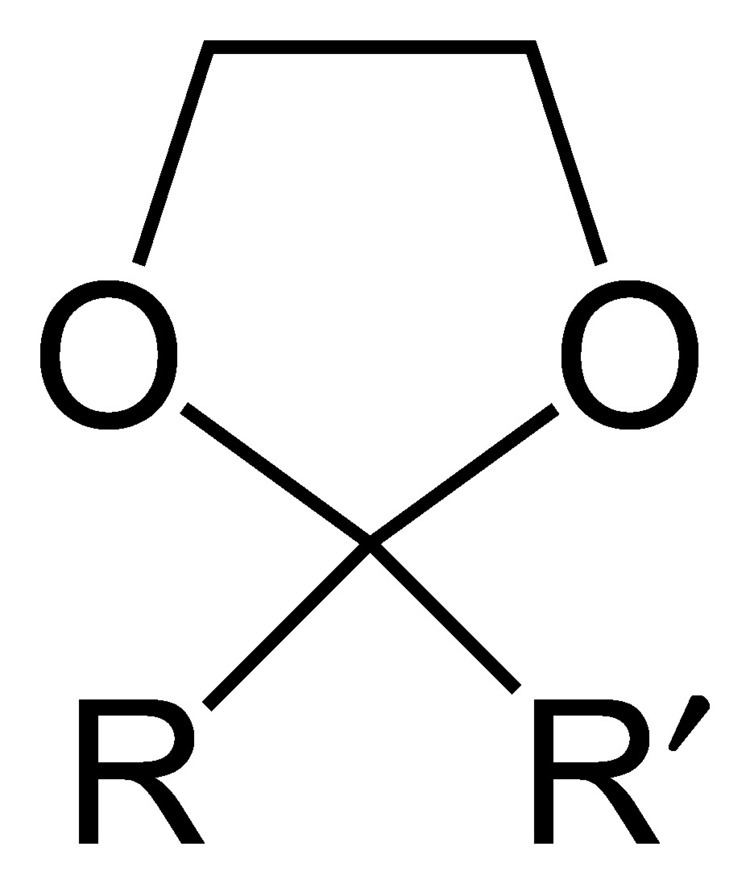 | ||
Dioxolane is a heterocyclic acetal with the chemical formula (CH2)2O2CH2. It is related to tetrahydrofuran by interchange of one oxygen for a CH2 group. The corresponding saturated 6-membered C4O2 rings are called dioxanes. The isomeric 1,2-dioxolane (wherein the two oxygen centers are adjacent) is a peroxide. 1,3-Dioxolane is used as a solvent and as a comonomer in polyacetals.
Contents
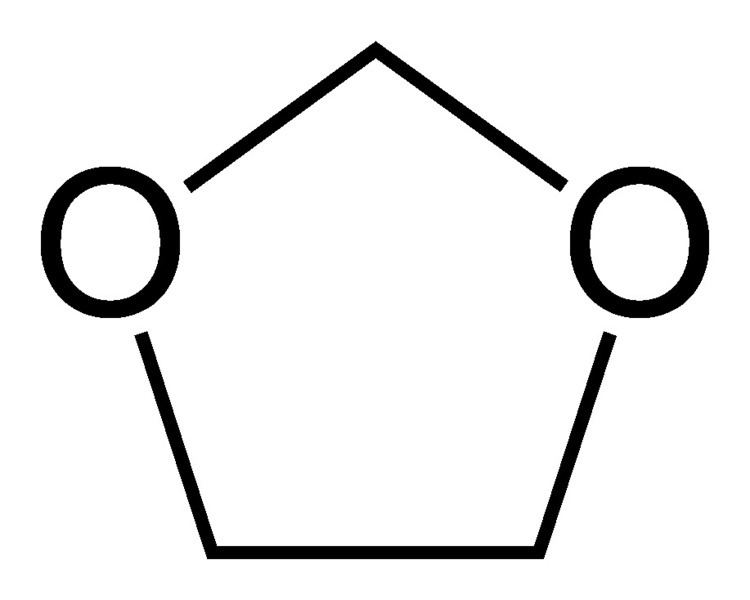
Dioxolanes as a class of compounds
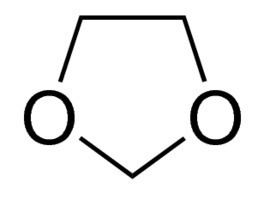
Dioxolanes are a group of organic compounds containing the dioxolane ring. Dioxolanes can be prepared by acetalization of aldehydes and ketalization of ketones with ethylene glycol.
(+)-cis-Dioxolane is the trivial name for L-(+)-cis-2-methyl-4-trimethylammoniummethyl-1,3-dioxolane iodide which is a muscarinic acetylcholine receptor agonist.
Neosporol
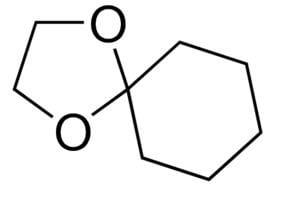
Neosporol is a natural product that includes a 1,3-dioxolane moiety, and is an isomer of sporol which has a 1,3-dioxane ring. The total synthesis of both compounds has been reported, and each includes a step in which a dioxolane system is formed using trifluoroperacetic acid (TFPAA), prepared by the hydrogen peroxide – urea method. This method involves no water, so it gives a completely anhydrous peracid, necessary in this case as the presence of water would lead to unwanted side reactions.
CF3COOCOCF
3 + H
2O
2•CO(NH
2)
2 → CF
3COOOH + CF
3COOH + CO(NH
2)
2
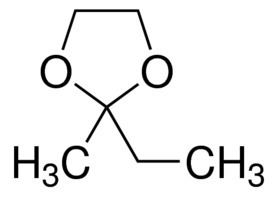
In the case of neosporol, a Prilezhaev reaction with trifluoroperacetic acid is used to convert a suitable allyl alcohol precursor to an epoxide, which then undergoes a ring-expansion reaction with a proximate carbonyl functional group to form the dioxolane ring.

A similar approach is used in the total synthesis of sporol, with the dioxolane ring later expanded to a dioxane system.
